Gaming My Corporate Communications
How often have you heard a CEO make this statement at an end-of-year all-hands meeting : “We have accomplished many things in 2017, not the least of which is tackling all of our communication problems. We communicate well internally and communicate clearly and regularly with our customers. Therefore, good communications is off our list of to-dos for 2018.” If you answer, “Never,” you are in good company with the other 100% of us who answer the same.

So, why are we still having the same problems in this age of myriad options for communication? Mostly because we’re forced to work with other humans. We humans tend to “silo information,” “be in our heads,” “have our own agendas,” and all other kinds of euphemisms that add up to, “We just really stink at communicating with each other.” Nonetheless, we’re an ambitious species who seek continuous improvement. This is why we introduced Slack.
For those of you who are neither cool nor work in a company that wants to be cool, Slack is a cloud-based chat application with a $5 Billion valuation. It supports easy integration with lots of other software products. It enables people within an enterprise or between different enterprises to easily create private or public communication channels to focus discussion on a specific issue. If you see it on my phone, it looks like corporate texting, but it’s a whole lot more. Suppose you’re working with a group of people and want to meet up for some burgers. Create a Slack “burgers” channel and include the people with whom you intend to eat. The group can converse and come to consensus.
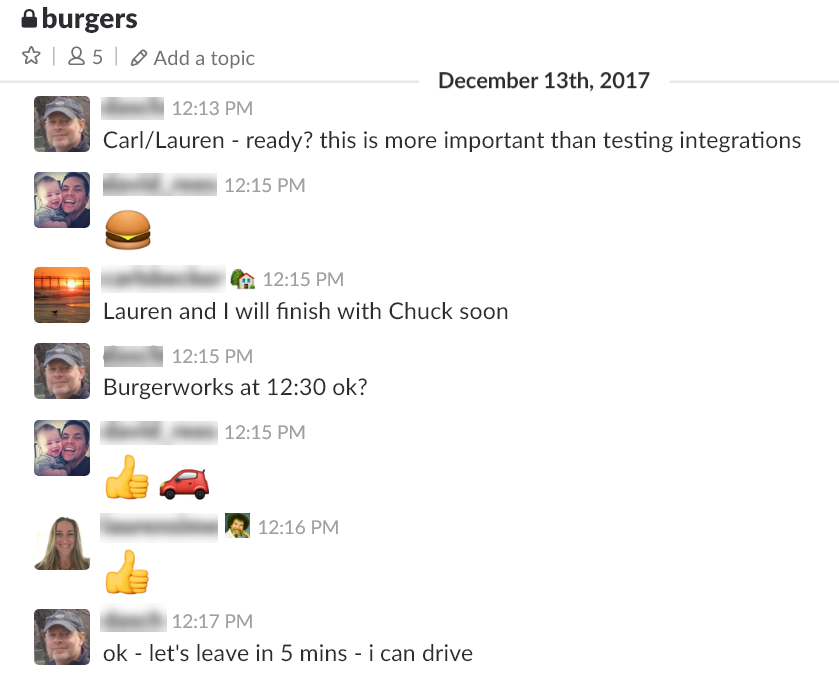
Ok, there’s nothing here that couldn’t be easily replicated in a group text. The beauty of Slack is that it supports an infinite number of private or public communication channels as well as Direct Message chats with one or more other people. The Slack user interface makes it easy to switch between chat sessions and see the ones that have activity or mention me.
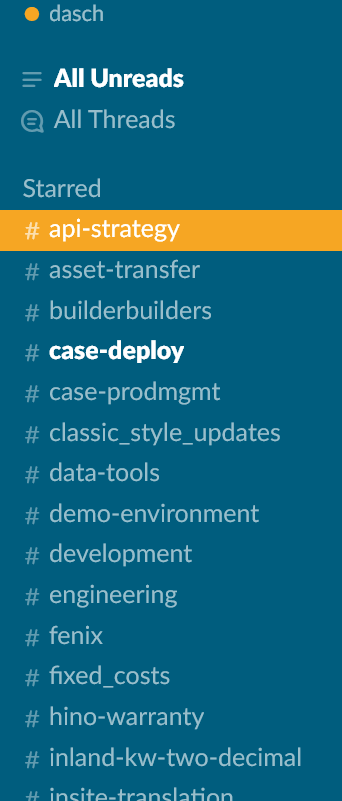
The promise of Slack is that it enables multi-disciplinary groups of people to communicate about a common concern. In a software company like the one where I work, we have employees in lots of locations and it’s not often possible for us to gather together in a conference room to hash things out. Furthermore, we are all too busy to schedule meetings for every item that comes our way during the day. Slack provides real-time communication in our fast-paced environment.
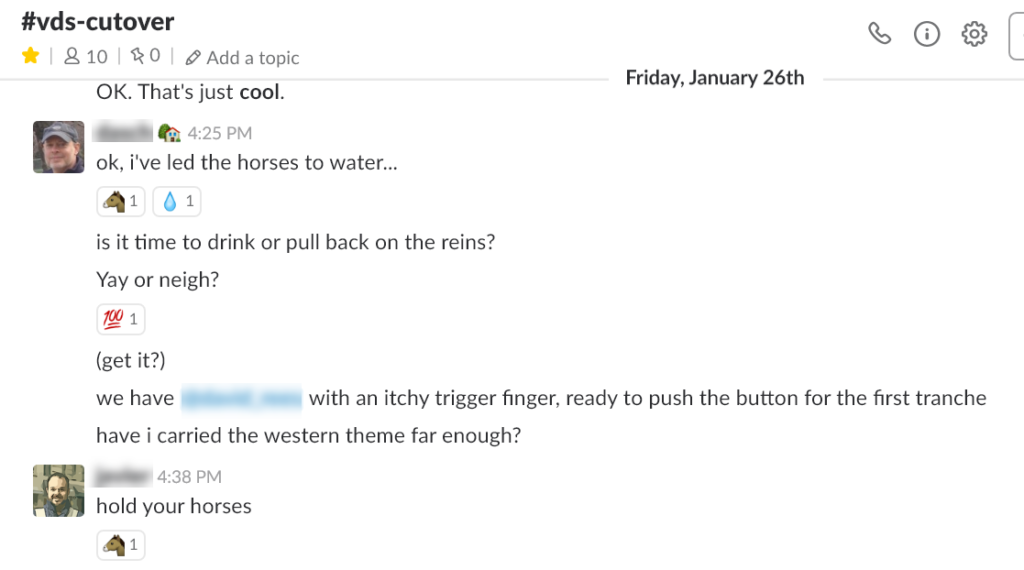
We started using Slack because we were dissatisfied with using email or direct message applications to communicate between teams. The problem with both of these means of communication is that it’s easy to exclude people and silo information to just the recipients of the email or chat. Slack is the great equalizer with channels that are publicly available to anyone in the company and private channels that allow selectively inviting additional people.
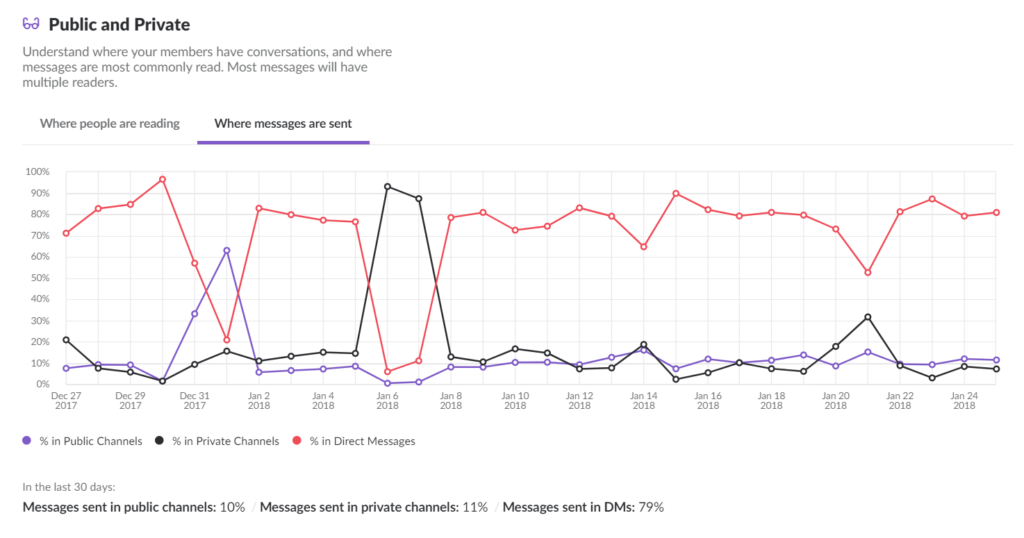
Similar to any product that appeals to the cool kids, Slack comes complete with various analytics that enable us to slice and dice usage patterns. The chart above shows that we make far greater use of Direct Messages (these are like text messages with either one person or a group) than public or private channels, which are typically open to a larger group. Some of the outlier spikes in the chart depict special circumstances that sometimes occur over weekends. So Slack, the great equalizer, has enabled the company to perpetuate closed communications that are invisible to others, albeit in a stylish and fun manner.
The extensive use of Direct Messages brings to mind a story from my adolescence in a New Jersey suburb where we neighborhood kids formed a club. One time, my friend and I did something especially heinous. Our punishment was swift. The girl next door and a member of our club, did not kick us out of the club. Instead, she started a new club and didn’t include us. Slack supports exactly the same behavior; if a couple of squeaky wheels in a channel are causing problems, it’s easy to start a new private channel and exclude them. The difference is that my friend and I deserved to be excluded from the new club, but in Slack it’s very easy to avoid contrarians who provide valuable ballast.
The great thing about a business oriented tool like Slack is that it enables us to establish community even when we’re apart.
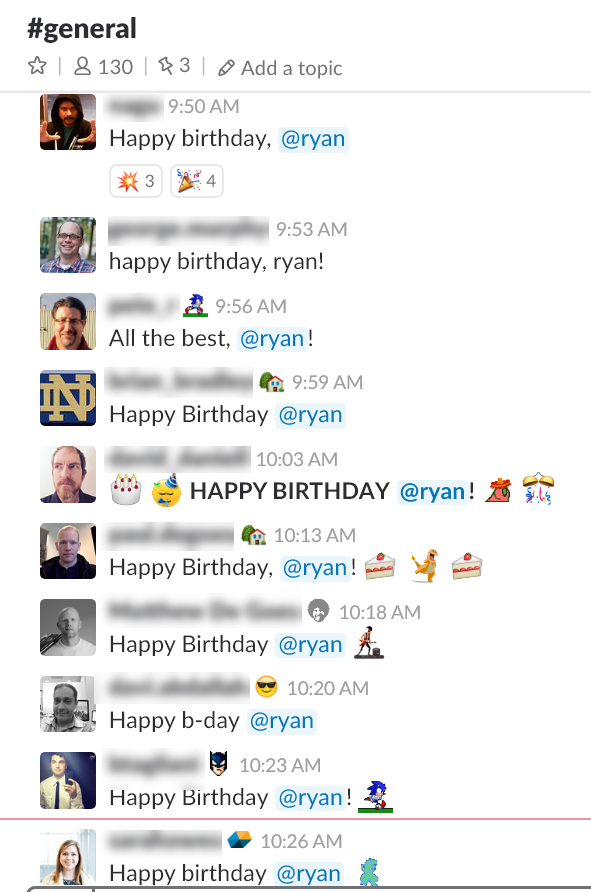
Lots of the water cooler conversations and casual interactions that happen in-person are approximated digitally and aided by an astonishing variety of emoji that site administrators install, adding onto the standard Slack defaults. Star Wars your thing? Do you express yourself with disgusting bodily functions? Is a dancing Carlton your thing? A Bob Ross groupie? Slack’s got you covered. Plenty has been written about emoji and the destruction of our language; the creative use of Slackmoji creates a non-verbal language!
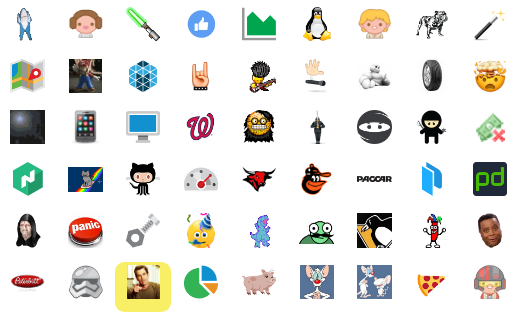
We have used Slack as the primary communication mechanism for important all-company events like our migration from one hosting provider to another. This was an all weekend and dead-serious endeavor that involved people from all parts of the company working to ensure that our customers would have a working product on Monday. This migration was historic for our company and we have the weekend memorialized in our Slack archives.
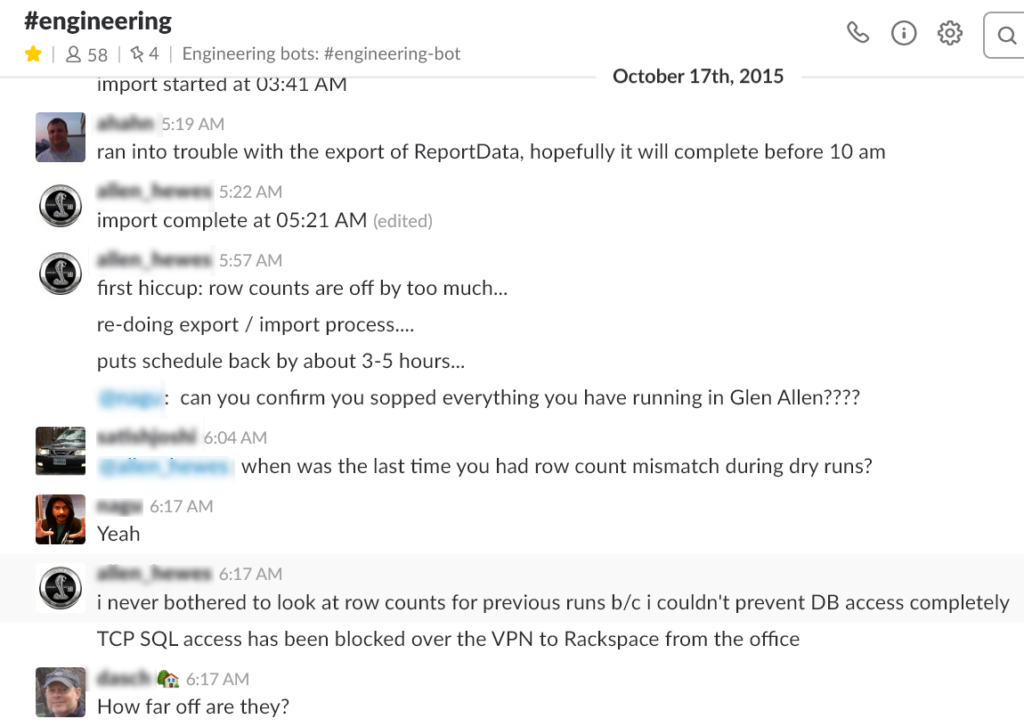
Slack can also be used for more mundane purposes.
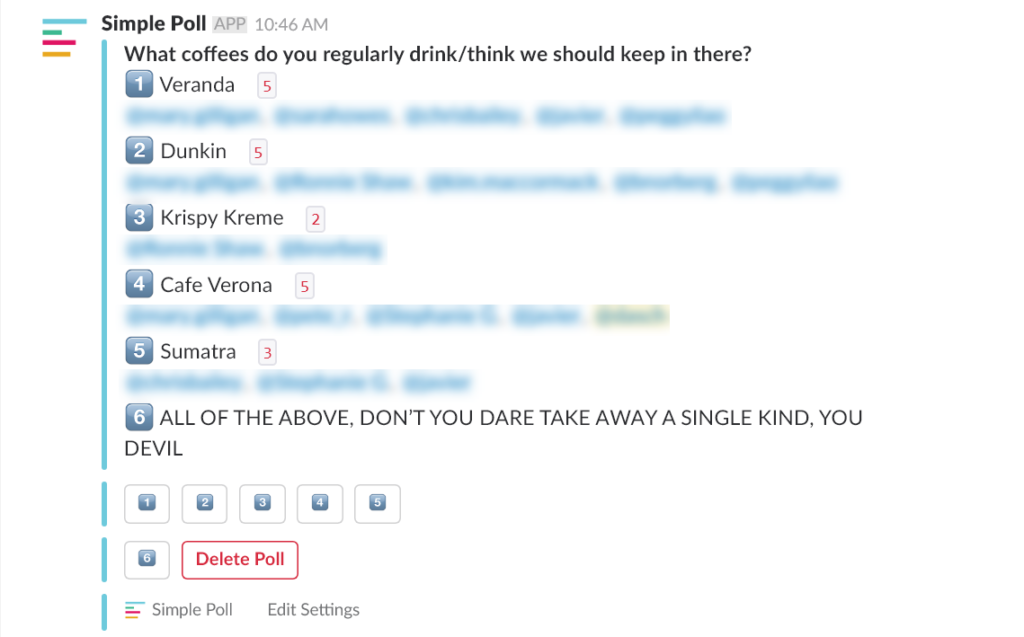
Slack is a jumble of neighborhood politics, social media bonhomie, generous magnanimity, and internecine squabbles. That is, Slack is a reflection of the people who use it. It has dramatically reduced our email traffic. It has enabled teams from different parts of the company (and from different companies) to collaborate and make really informed and democratic decisions. It has enabled large groups of distributed employees to feel connection and community. Perhaps the darkest side of Slack is the seductive appeal of instant communications across a company. The gratification of immediate answers keeps employees from focusing on the bigger picture. The biggest challenge of Slack is determining when to turn it off. Slack is a tool, not a panacea.

too much for me and would nerver use.
Larry, “try it, you’ll like it!” It seems to be really good for a team that is spread out (even on the same floor or office campus, and definitely for geographically dispersed teams). If a team has ready access to each other, it may not be as good a fit. It is also the kind of thing that you can use as little or as much as you want. David is clearly in the advanced user category!
David,
very informative and entertaining post! Also, some keen insights about human communications and corporate culture — at least here in the U.S.
Thanks